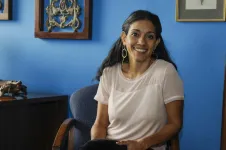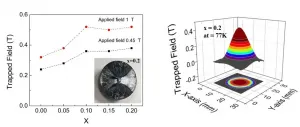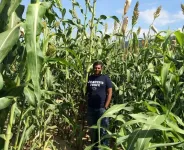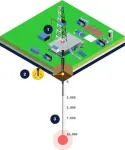Women in science propose changes to discriminatory measures of scientific success
2021-06-17
(Press-News.org) When Ana K. Spalding, a Research Associate at the Smithsonian Tropical Research Institute (STRI) and Assistant Professor of Marine and Coastal Policy at Oregon State University (OSU) talks about mentorship in academia, she describes it as meaningful relationship. It goes beyond conversations about research and publications, and into shared experiences. This is just one approach--proposed by Spalding and 23 other women scientists from around the world, in a new article published in PLOS Biology--that calls for a shift in the value system of science to emphasize a more equal, diverse and inclusive academic culture.
The authors came together after reading a paper in Nature Communications that was later retracted, which claimed that women in science fare better with male rather than female mentors. That paper used data on co-authorship among senior and junior researchers and citations as measures of mentorship and success. Yet these metrics are flawed and biased against marginalized groups. The data show that women receive more manuscript rejections and are less likely to be published in prestigious journals than men, while ethnically diverse scientific teams experience lower acceptance rates and fewer citations than less diverse teams.
Meanwhile, productivity is not always a sign of a supportive working environment, and recent studies show that graduate students are twice as likely to experience mental health challenges, compared to the general population with equivalent education. For women of color in STEMM fields, the trend is even more pronounced. They face both systemic sexism and racism, along with daily microaggressions. The situation is not much better for sexual minorities.
Spalding is afro-Panamanian, and a minority among tenured faculty at OSU. According to a 2019 article in the Chronicle of Higher Education, less than 1 percent of tenured professors at OSU look like her. In the state of Oregon, things are not much different, where only about 2 percent of the population is Black or African American, per the U.S. Census Bureau. So, around OSU, challenges range from lack of representation in predominantly white spaces where her presence or expertise are questioned, to finding places to get her hair done (where hair, as a representation of Blackness is often questioned or seen as unprofessional).
As a graduate student, she never felt represented. Looking back, Spalding understands how important it would have been to have the kind of support where her identity and culture were considered holistically. In that sense, the PLOS Biology article encourages individuals to explore a variety of mentoring relationships throughout their careers: relationships that may help them achieve their different goals and needs beyond academia. This is one crucial way to promote wellbeing and foster a sense of belonging for mentees with diverse backgrounds, increasing their retention in science.
"Don't think you have to be a certain way to belong," Spalding said. "Feel confident that you belong, but also look for people who accept you as you are."
Ultimately, the authors call for the scientific community, in particular those in positions of power and privilege, to take strong action towards helping ensure safe and healthy work environments for scientists from diverse backgrounds, while supporting a more inclusive value system in science that embraces the multifaceted nature of scientific impact. With these changes in place, the scientific world will not only have a greater capacity for innovation, which is essential for addressing the pressing challenges of our times, such as pandemics and climate change, but will be a better place from a purely humanistic perspective.
As an example, Katalin Kariko, a Hungarian scientist who immigrated to the United States, struggled to find a permanent position for decades, relying instead on senior scientists to take her in. Now, her groundbreaking research in mRNA has made possible the development of the Pfizer-BioNTech and Moderna vaccines against Covid-19.
"I'm particularly excited about the idea of expanding our definitions of science to be more inclusive of applied and relevant contributions to societal issues such as climate change (which may or may not get into the highest impact journals)," said Spalding. "Furthermore, I am keen on supporting a 'multidimensional mentorship model' that emphasizes mentee wellbeing in academia."
INFORMATION:
The Smithsonian Tropical Research Institute, headquartered in Panama City, Panama, is part of the Smithsonian Institution. The Institute furthers the understanding of tropical nature and its importance to human welfare, trains students to conduct research in the tropics and promotes conservation by increasing public awareness of the beauty and importance of tropical ecosystems.
[Attachments] See images for this press release:

ELSE PRESS RELEASES FROM THIS DATE:
2021-06-17
Superconductors are something like a miracle in the modern world. Their unique property of zero resistance can revolutionize power transmission and transport (e.g., Maglev train). However, most of the conventional superconductors require cooling down to extremely low temperatures that can only be achieved with liquid helium, a rather expensive coolant. Material scientists are now investigating "high-temperature superconductors" (HTSs) that can be cooled to a superconducting state by using the significantly cheaper liquid nitrogen (which has a remarkably higher temperature than liquid helium). ...
2021-06-17
TROY, N.Y. -- Optoelectronic materials that are capable of converting the energy of light into electricity, and electricity into light, have promising applications as light-emitting, energy-harvesting, and sensing technologies. However, devices made of these materials are often plagued by inefficiency, losing significant useful energy as heat. To break the current limits of efficiency, new principles of light-electricity conversion are needed.
For instance, many materials that exhibit efficient optoelectronic properties are constrained by inversion symmetry, a physical property that limits engineers' control of electrons in the material and their options for designing novel or efficient devices. In research published today in Nature ...
2021-06-17
With sorghum poised to become an important crop grown by Pennsylvania farmers, Penn State researchers, in a new study, tested more than 150 germplasm lines of the plant for resistance to a fungus likely to hamper its production.
Sorghum, a close relative to corn, is valuable for yielding human food, animal feed and biofuels. Perhaps its most notable attribute is that the grain it produces is gluten free. Drought resistant and needing a smaller amount of nutrients than corn to thrive, sorghum seems to be a crop that would do well in the Keystone State's ...
2021-06-17
The article 'The RNA Atlas expands the catalog of human non-coding RNAs', published today in Nature Biotechnology, is the result of more than five years of hard work to further unravel the complexity of the human transcriptome. Never before such a comprehensive effort was undertaken to characterize all RNA-molecules in human cells and tissues.
RNAs in all shapes and sizes
Our transcriptome is - analogous to our genome - the sum of all RNA molecules that are transcribed from the DNA strands that make up our genome. However, there's no 1-on-1 relationship with the latter. Firstly, each cell and tissue hasve a unique transcriptomes, with varying RNA production and compositions, including tissue-specific RNAs. Secondly, ...
2021-06-17
Additive manufacturing offers an unprecedented level of design flexibility and expanded functionality, but the quality and process can drastically differ across production machines, according to Hui Yang, a professor of industrial engineering at Penn State. With applications in aerospace, health care and automotive industries with potential for mass customization, additive manufacturing needs quality management.
To address this concern, Yang and a team of researchers from Penn State, University of Nebraska--Lincoln and the National Institute of Standards and Technology (NIST) proposed the design, development and implementation of a new data-driven methodology for quality control in additive manufacturing. They published their work in the Proceedings ...
2021-06-17
CAMBRIDGE, MA--Geothermal energy systems have the potential to power the world and become the leading technology for reducing greenhouse gas emissions if we can drill down far enough into the Earth to access the conditions necessary for economic viability and release the heat beneath our feet. END ...
2021-06-17
SAN ANTONIO (June 17, 2021) -- Convalescent plasma therapy was associated with better survival in blood cancer patients hospitalized with COVID-19, especially in sicker patients. The findings by the COVID-19 and Cancer Consortium (CCC19) are newly published in the peer-reviewed journal JAMA Oncology.
The Mays Cancer Center, home to UT Health San Antonio MD Anderson, is part of the CCC19. The international consortium is composed of 124 medical centers and institutions in North and South America that conduct research to learn how COVID-19 affects cancer patients.
Dimpy Shah, MD, PhD, is an epidemiologist and assistant professor of population health sciences at The University of Texas Health ...
2021-06-17
Forest fires have crept higher up mountains over the past few decades, scorching areas previously too wet to burn, according to researchers from McGill University. As wildfires advance uphill, a staggering 11% of all Western U.S. forests are now at risk.
"Climate change and drought conditions in the West are drying out high-elevation forests, making them particularly susceptible to blazes," says lead author Mohammad Reza Alizadeh, a PhD student at McGill University under the supervision of Professor Jan Adamowski. "This creates new dangers for mountain communities, with impacts on downstream water supplies and the plants and wildlife that call these forests home."
Climate warming has diminished 'flammability barrier'
In ...
2021-06-17
If the genome is the recipe of life, base pairs are the individual ingredients listed. These chemical structures form DNA, and every living organism on Earth has just four. The specific arrangements of these four base pairs -- A, T, C, G -- make us who and what we are.
So it was a big surprise when Scripps Research scientists revealed in 2014 that they could introduce two new, unnatural base pairs (they called them X and Y for short) into the genetic code of living bacteria in the lab. It was like two never-seen-before ingredients tossed into the recipe, hypothetically expanding the variety of dishes a cell can whip up.
Researchers immediately saw the potential applications: With more control and selection, they ...
2021-06-17
In a bid to find or refine laboratory research models for cancer that better compare with what happens in living people, Johns Hopkins Medicine scientists report they have developed a new computer-based technique showing that human cancer cells grown in culture dishes are the least genetically similar to their human sources.
The finding, they say, should help focus more resources on cancer research models such as genetically engineered mice and 3D balls of human tissue known as "tumoroids" to better evaluate human cancer biology and treatments, and the genetic errors ...
LAST 30 PRESS RELEASES:
[Press-News.org] Women in science propose changes to discriminatory measures of scientific success



